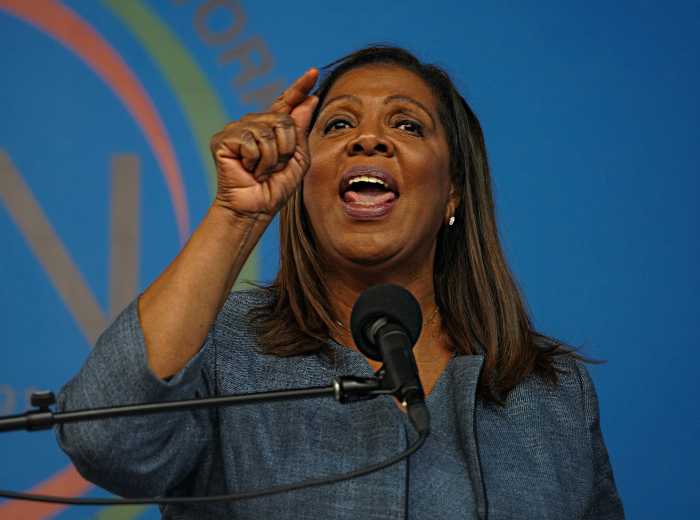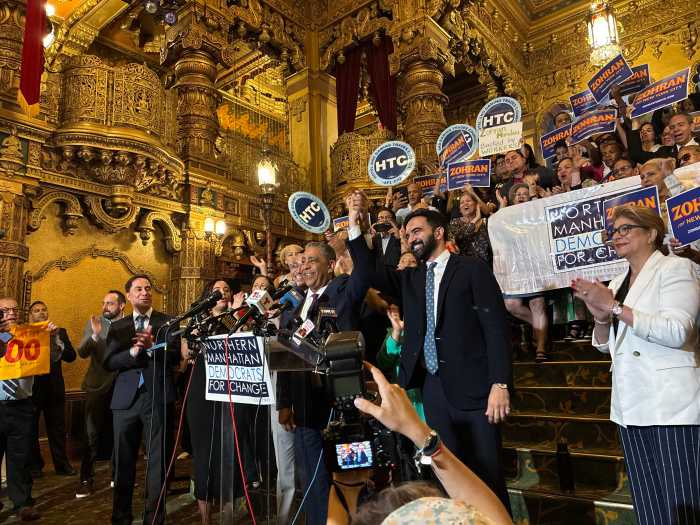
City officials are still debating how to best pave the way for a dramatic increase in the number of bike and bus lanes.
City Council Speaker Corey Johnson on Tuesday said his office is trying to come to an agreement with Mayor Bill de Blasio’s administration on Johnson’s “streets master plan” legislation to "revolutionize" city street design. City Hall has opposed the bill, which would require the city to publish five-year plans for city streets with a focus on improving spaces for bikes, buses and pedestrians.
“We will not fix our city streets with thoughts and prayers,” said Johnson at a news conference outside City Hall Tuesday, referencing this year’s uptick in pedestrian and cycling deaths. “We will fix our city streets with concrete, direct action by government. And that’s what today is about. With smart urban planning that builds a New York City for the 21st century.”
Under the legislation, the city’s master plans must include the installation of 50 miles of new “protected” bicycle lanes and 30 miles of new bus lanes; the doubling in acres of pedestrian plazas and a dozen new shared streets, a design already peppered around the city where slow-moving cars can intermingle with pedestrians and cyclists.
The legislation’s language, however, does not call for an improved design for protected bike lanes or any new completely separated cycling paths. It gives the city’s Department of Transportation wiggle room to install lanes with “vertical delineation or physical barriers.”
Johnson said he was open to tweaking the design mandate for protected lanes as the bill is bandied over.
“We want to get this right. So we’re literally going through line by line looking at what we’re talking about for pedestrians. Looking about the benchmarks that we’ve put in place," Johnson said. "But we want to get it done correctly."
So far, 12 Council members have offered support for the bill, according to the most recent count on the Council’s website. Advocates at Transportation Alternatives, which rallied alongside Johnson, were lobbying Council members on the legislation.
While the de Blasio administration has increased the number of protected bike and bus lanes, the pace is still far from what Johnson’s bill would mandate. The DOT has committed to installing between 10 and 15 miles of bus lanes each year and has averaged installing about 20 miles of protected bike lanes each year, according to DOT Commissioner Polly Trottenberg.
Trottenberg testified against the legislation in June, arguing that while the city could do better, the bill would add “significant costs”; likely require a much more limited engagement with community boards; and strain already thin resources both inside and outside the agency.
“We’re doing so many projects now — bike lanes, bus lanes, Vision Zero projects — so many things that involve [lane] striping as well as just our regular maintenance of the streets,” Trottenberg said at the time. “We’ve basically used up the contracting capacity of the region.”
The de Blasio administration didn’t immediately respond to a request to comment for this story.





































